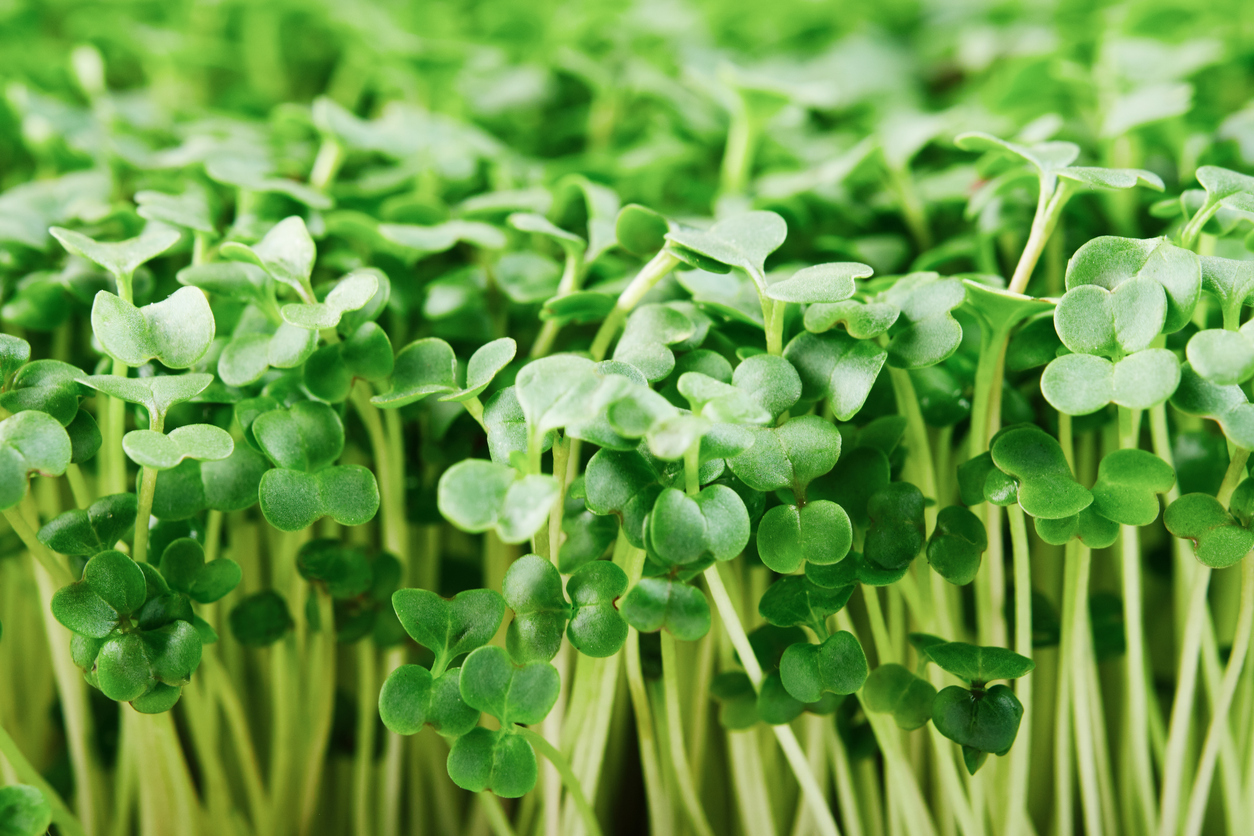
Close-up of microgreen broccoli
Microgreens - Artificial Selection
Grade 6-8
This lesson focuses on two main ideas:
- The process of growing microgreens with the most desired traits.
- Artificial selection and its benefits.
Procedure
INTRODUCTION (15 minutes)
Read the introduction to students and review new vocabulary. Students will watch the "Maryland Farm and Harvest - Episode 1003 - Microgreens/Artificial Selection ” video. After the video, discuss the essential questions and thinking questions aligned to the topic and video. Discuss with students, the career connections related to microgreens.
EXTENSION (15-30 minutes)
Complete extension activities with students, as you deem appropriate.
ASSESSMENT (15 minutes)
Have students apply their newfound knowledge by completing a Summative CER on the lesson using evidence from the video and activities as support.
REFLECTION (10 minutes)
Have students complete a reflection.
Standards
MS-LS4-5 Biological Evolution: Unity and Diversity
Gather and synthesize information about technologies that have changed the way humans influence the inheritance of desired traits in organisms.
- Science and Engineering Practices
Obtaining, Evaluating, and Communicating Information
Obtaining, evaluating, and communicating information in 6–8 builds on K–5 experiences and progresses to evaluating the merit and validity of ideas and methods.- Gather, read, and synthesize information from multiple appropriate sources and assess the credibility, accuracy, and possible bias of each publication and methods used, and describe how they are supported or not supported by evidence.
- Disciplinary Core Ideas
LS4.B: Natural Selection
- In artificial selection, humans have the capacity to influence certain characteristics of organisms by selective breeding. One can choose desired parental traits determined by genes, which are then passed on to offspring.
- Crosscutting Concepts
Cause and Effect
- Phenomena may have more than one cause, and some cause and effect relationships in systems can only be described using probability.
Standard 3
Environmental Impact of Human Activity:
Environmentally literate students construct and apply understanding of the environmental impact of human activities on Earth’s systems and resources.
Summative CER
Option 1:
A student claims that microgreens were naturally grown and their tasteful flavors and desired traits were created by chance over time. Develop a response in which you support or refute the student’s claim. Use evidence and reasoning from the videos and activities to support your response.
Option 2:
Develop a scientific explanation of how microgreens are developed with the best traits for consumption. Use evidence and reasoning from the videos and activities to support your explanation.
Reflection Questions
- What are ways in which humans control the creation and growth of desired living things?
- How have humans contributed to the growth and development of healthy microgreens?
Summative CER Rubric
| Scoring Rubric Components | No Response Score Point 0 |
Not There Yet Score Point 0.5 |
Beginning To Score Point 0.75 |
Yes Score Point 1.0 |
|---|---|---|---|---|
| CLAIM | The claim is missing. | The claim is incorrect or irrelevant. | The claim partially takes a position on the topic or issue addressed within the prompt. | The claim takes an appropriate position on the topic or issue addressed within the prompt. |
| EVIDENCE | There is no type of evidence in the response. | The evidence is irrelevant or does not support the claim. | The evidence partially supports the claim and demonstrates some understanding of the topic or text, using appropriate sources. | The evidence supports the claim and demonstrates a strong understanding of the topic or text, using appropriate sources. |
| REASONING | There is no use of words, phrases, and clauses to create cohesion and to clarify the relationship between the claim and evidence. | Use of words, phrases and clauses fail to show or explain any relationship between the claim and evidence. | Scientific words, phrases, and clauses used lack cohesion but partially clarify the relationship between the claim and evidence. | Appropriate scientific words, phrases, and clauses are used to create cohesion and to clarify the relationship between the claim and evidence. |


